Dopiansa Temple – 도피안사 (Cheorwon, Gangwon-do)
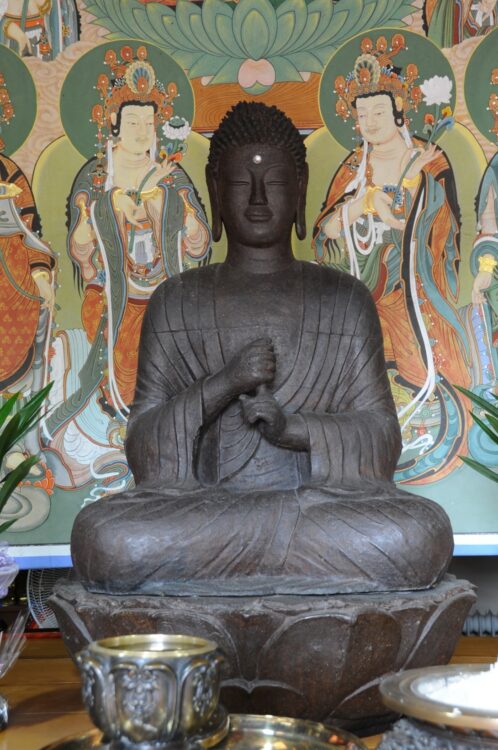
Temple History
Dopiansa Temple is located in northern Cheorwon, Gangwon-do some 9 km from the DMZ. Dopiansa Temple was first constructed in 865 A.D. by Doseon-guksa (826-898 A.D.). There’s a legend that an iron statue of Birojana-bul (The Buddha of Cosmic Energy) was to be commissioned. And it was to be enshrined at Anyangsa Temple in Cheorwon. However, the statue disappeared on its way to be enshrined at Anyangsa Temple. Eventually, the iron statue of Birojana-bul was discovered at a previously unknown location on Mt. Hwagaesan. As a result, Doseon-guksa decided, out of respect for Birojana-bul’s choice, to build Dopiansa Temple at the site where the statue was discovered and enshrine the iron statue at the newly built temple. This statue is known as the Iron Seated Vairocana Buddha of Dopiansa Temple, and it’s National Treasure #63.
Nearly one thousand years passed without any history being recorded about Dopiansa Temple. It’s not until 1898, and with the burning of the temple by fire, that the temple appears, once more, in the history books. By 1914, the temple was rebuilt. After the liberation of Korea after World War 2, Dopiansa Temple initially fell under the control of North Korea. During the Korean War (1950-1953), the city of Cheorwon was the site of many blood battles; and as a result, the temple was destroyed, again; this time, in 1950.
After the Korean War, and with the new drawing of the DMZ border between North and South Korea, Dopiansa Temple suddenly found itself south of the border and in South Korea’s administrative hands. So in 1959, the the 15th Division of the Korean Army rebuilt the temple under the supervision of the head monk Kim Sang-gi. Purportedly, one day in 1959, Gen. Lee Myeong-jae, the 15th Division Korean Army commander, had a dream. In this dream a Buddha statue appeared, and this statue was buried in the ground. The next day, the general went on an inspection of the front near the DMZ, and he was surprised to find a woman that said she had seen the exact same statue from the general’s dream. So the woman guided Gen. Myeong-jae to the burned out remains of the Dopiansa Temple Site. Searching the temple site, the Iron Seated Vairocana Buddha of Dopiansa Temple was discovered. Remarkably, the Buddha of the general’s dream was in fact the Buddha that he had just recovered from the ground.
Also at this time, and because of the close proximity to the DMZ, Dopiansa Temple was long managed by a military monk within the boundaries of the Civilian Control Line (CCL). It was in 1986 that people were finally able to freely visit the temple without first receiving special permission to enter the CCL with the transfer of the temple from the supervision of the military to civil authorities. And in 1988, the Daejeokgwang-jeon Hall was built to house the Iron Seated Vairocana Buddha of Dopiansa Temple.
Dopiansa Temple is home to one National Treasure, the Iron Seated Vairocana Buddha of Dopiansa Temple; and the Korean Treasure, the Three-Story Stone Pagoda of Dopiansa Temple, which is Korean Treasure #223.
Temple Layout
As you first approach the temple grounds, you’ll be welcomed by a beautiful new Iljumun Gate. A little further up and you’ll find the Cheonwangmun Gate. Inside are four images of the Four Heavenly Kings. While smaller and more slender than other statues of the Four Heavenly Kings, the Four Heavenly Kings at Dopiansa Temple are vibrantly painted and beautifully executed in design.
Finally through the Cheonwangmun Gate, and before the Haetalmun Gate, you’ll find a long, rectangular lotus pond. Inside this pond are hundreds of pink lotus flowers. They are simply stunning, especially during the right season. Next up is the Haetalmun Gate, which is similar in design to that of the Cheonwangmun Gate, but the third entry gate is absent of occupants. The reason for this is that the Haetalmun Gate has a different purpose. The Haetalmun Gate is similar to that of the Geumgangmun Gate. The Haetalmun Gate means “Liberation Gate” in English. The name implies that by passing through this gate one moves from the secular world and into the Buddhist world. This inspires an individual to seek liberation from worldly suffering.
Now having passed through the Haetalmun Gate, climbed a set of stairs, and entered the main temple courtyard at Dopiansa Temple, you’ll find the Daejeokgwang-jeon Hall waiting for you. The exterior walls to the main hall are adorned with Shimu-do (Ox-Herding Murals). And stepping inside the Daejeokgwang-jeon Hall, you’ll find the amazing Iron Seated Vairocana Buddha of Dopiansa Temple on the main altar. The historic statue, which is National Treasure #63, rests under a large, multi-layered, golden canopy. The statue is one of several cast iron statues produced between the late Unified Silla (668-935 A.D.) and early Goryeo Dynasty (918-1392). What makes this statue so special is that it sits atop an iron cast pedestal, as well. The pedestal that the statue rests upon is comprised of three tiers with the upper and lower tiers carved with lotus petals and the middle being octagonal in shape. This was a popular design for this time period. As for the statue, it has conch-shaped hair, a serene oval face, and its making the mudra (ritualized hand gesture) of the diamond fist. This mudra, or “suin” in Korean, is typical for Birojana-bul (The Buddha of Cosmic Energy). On the back side of the statue, there’s an inscription indicating that the statue was made in 865 A.D. This statue is a wonderful example of late Unified Silla craftsmanship and artistry.
Out in front of the Daejeokgwang-jeon Hall, on the other hand, is the Three-Story Stone Pagoda of Dopiansa Temple. The statue was first constructed in 865 A.D., as well. Rather uniquely, the three-story pagoda is one of the rare examples of a pagoda with an octagonal base that’s decorated with elephant-eye carvings. Each of the eight sides of the base have these carvings on them. The second tier of the base has a lotus flower design, while the upper part of the base is without a design. The body and the roof stones for each of the three stories of the structure are made from a single stone block without any decorations adorning their surface. The pagoda is a good example of the style found between Unified Silla and the Goryeo Dynasty.
To the left of the Daejeokgwang-jeon Hall is the Geukrakbo-jeon Hall. This rather plain looking shrine hall has a beautiful set of iron statues resting on the main altar. While newly made, they are a beautiful companion to the much older iron statue of Birojana-bul in the adjacent main hall. In the centre of these three newly made statues is that of Amita-bul (The Buddha of the Western Paradise), who is joined on either side by Gwanseeum-bosal (The Bodhisattva of Compassion) and Daesaeji-bosal (The Bodhisattva of Wisdom and Power for Amita-bul). And the interior is lit-up with iridescent lights that illuminate the entire interior. So what it lacks on the exterior is more than made up for by the Geukrakbo-jeon Hall’s interior.
And to the rear of the Geukrakbo-jeon Hall is the Samseong-gak Hall. Housed inside the plain exterior is a vibrant collection of three shaman murals. All three appear to be newer in composition with the image of Chilseong (The Seven Stars) hanging in the middle of the three. To the left is a painting dedicated to Dokseong (The Lonely Saint). And the painting to the right is dedicated to Sanshin (The Mountain Spirit). All three paintings appear to have been painted by the same artist.
How To Get There
From the Cheorwon Intercity Bus Terminal, you’ll need to catch the oddly named “Baekmagoji-yeok – 백마고지역” bus. You’ll need to take this bus for 23 minutes, or six stops, and get off at the “3515 Budae Hacha – 3515 부대하차” stop. From where the bus drops you off, you’ll then need to walk ten minutes, or 700 metres, to get to Dopiansa Temple. More specifically, from where the bus drops you off, head north for about 400 metres along “Geumhak-ro – 금학로” street. Finally, you’ll come to “Dopiansa samgeori – 도피안사 삼거리” road. Head east across the Dopiansa -gyo Bridge, until you finally arrive at the temple grounds.
Overall Rating: 7.5/10
While lesser known and smaller in size, Dopiansa Temple more than makes up for this with the Iron Seated Vairocana Buddha of Dopiansa Temple (a National Treasure) and the Three-Story Stone Pagoda of Dopiansa Temple (a Korean Treasure). Both are beautiful examples of the artistic achievements of the late Unified Silla Dynasty. Adding to the temple’s historic achievements are the iron triad inside the Geukrakbo-jeon Hall and the shaman paintings housed inside the Samseong-gak Hall. And while Dopiansa Temple is a mere 9 km from the DMZ, it has a wonderfully serene feel to it.
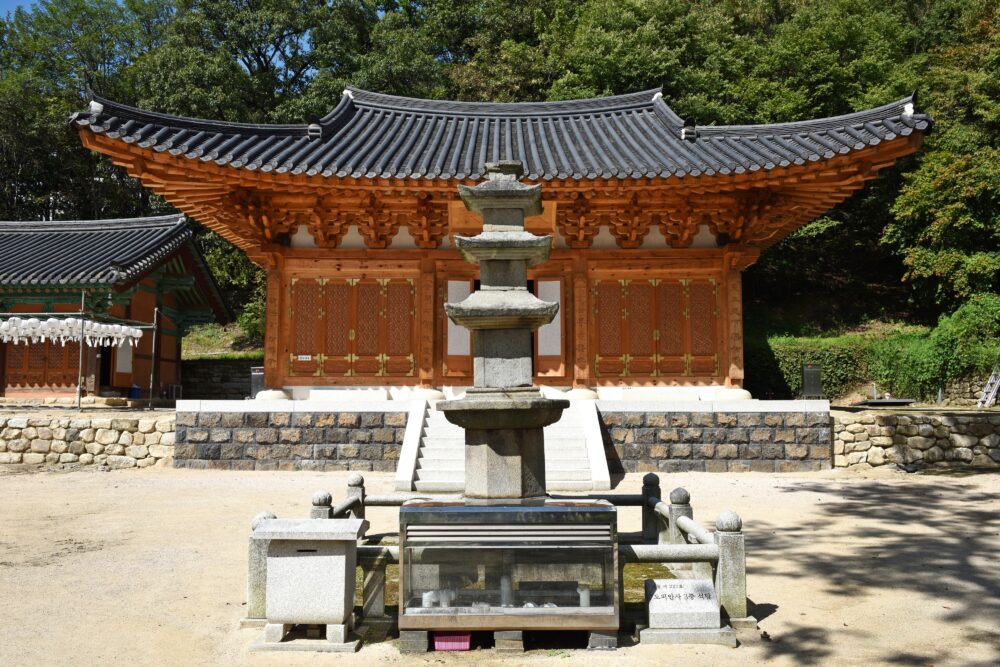
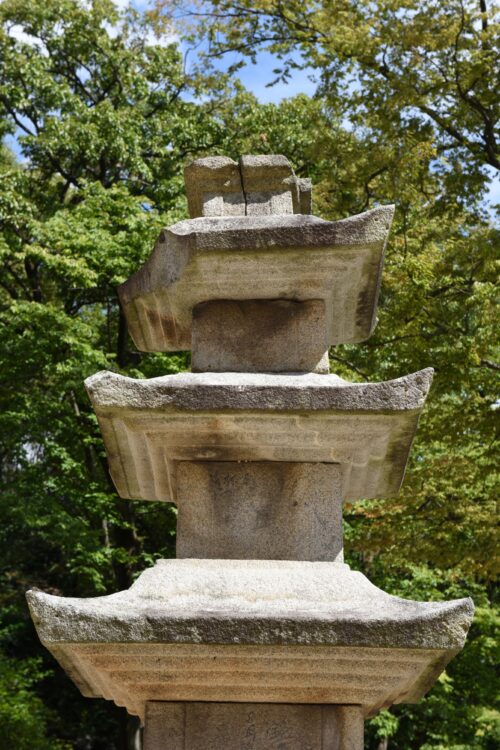
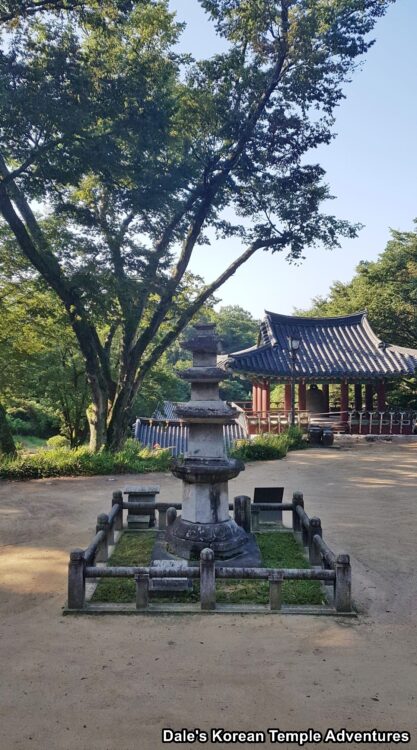
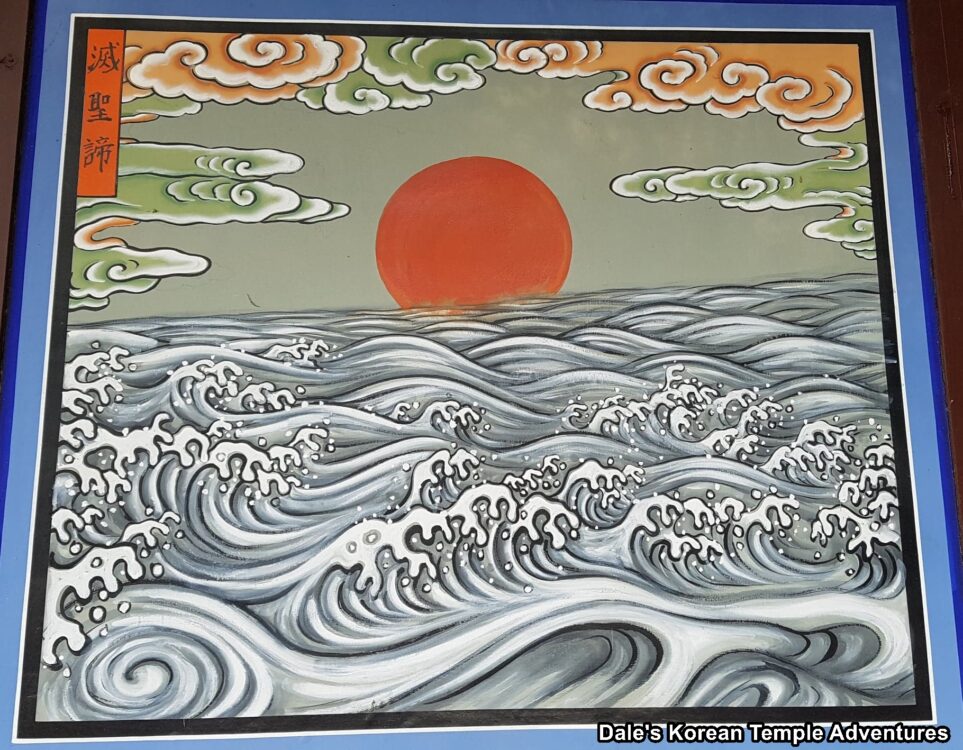
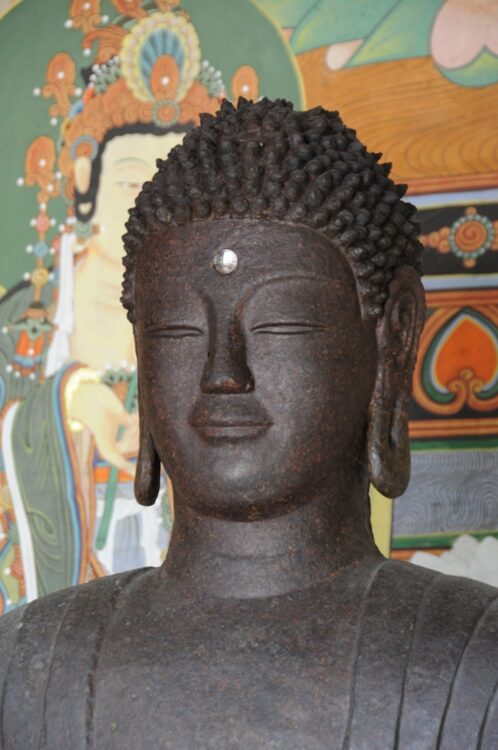
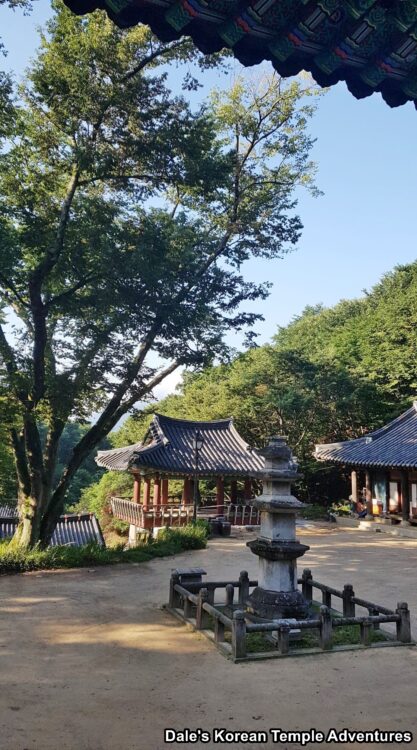
*Special thanks to CHA because the pictures I originally took were destroyed when my camera’s SD card got fried. All of the post’s pictures were taken by my phone.